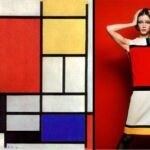Have you ever seen an old photo or a classic movie and fallen in love with the clothes? Or walked into a thrift store and found a unique piece that felt special? That’s the magic of vintage fashion. It’s more than just old clothes; it’s about bringing the style, history, and unique charm of past eras into your modern wardrobe. Vintage fashion offers a refreshing break from today’s fast-moving trends and allows you to create a truly individual look.
This guide will take you through the enduring charm of vintage fashion, why it’s so popular, how to find those hidden gems, and simple ways to style them into your everyday outfits.
What is Vintage Fashion? (And How is it Different from Used?)
The terms “vintage,” “retro,” and “used” are often mixed up, but they have different meanings in fashion:
- Used/Secondhand: This simply means an item has been owned and worn by someone else. It could be a t-shirt from last year or a dress from 20 years ago.
- Vintage: Generally refers to clothing that is at least 20 years old but less than 100 years old. It reflects the style and era it came from.
- Retro: This isn’t truly old clothing. Instead, “retro” refers to new clothes that are designed to look like a past era. For example, a brand might make a “retro” 1950s-style dress today.
So, while all vintage clothes are secondhand, not all secondhand clothes are vintage. The charm of vintage comes from its age, history, and genuine connection to a past era.
Why is Vintage Fashion So Charming and Popular?
There are many reasons why people are falling in love with vintage fashion:
- Unique Style: In a world of mass-produced clothing, vintage pieces stand out. They often have unique details, fabrics, and cuts that you simply can’t find in modern stores. Wearing vintage means you’re unlikely to bump into someone else in the exact same outfit.
- Quality and Craftsmanship: Clothes from past decades were often made with higher quality materials and more meticulous construction than much of today’s “fast fashion.” They were designed to last, which is why they’re still around today.
- Sustainability: This is a huge reason for its rise in popularity. Buying vintage is one of the most eco-friendly ways to shop. It extends the life of existing garments, reduces textile waste in landfills, and cuts down on the environmental impact (water, energy, chemicals) of producing new clothes. It’s truly “circular fashion.”
- Story and History: Every vintage piece has a past. You might wonder who wore it, where they wore it, and what stories it could tell. This adds a unique sense of character and romance.
- Affordability: You can often find high-quality, unique, and well-made vintage pieces for much less than what a comparable new item would cost.
- Timeless Appeal: Many vintage styles are classic and timeless, meaning they never truly go out of fashion. A well-chosen vintage piece can elevate any modern outfit.
- Ethical Choice: By buying vintage, you avoid supporting brands that may have unethical labor practices in their current production.
Where to Find Your Vintage Treasures
Hunting for vintage pieces is part of the fun! Here are the best places to look:
- Local Thrift Stores/Charity Shops: These are the most common places. You need patience and a good eye, but you can find amazing deals. Visit regularly, as inventory changes constantly.
- Dedicated Vintage Boutiques: These stores specialize in true vintage items. They are often more curated (meaning they’ve already sorted through the less desirable items), and the clothes are usually cleaned and repaired. Prices will be higher than thrift stores but reflect the quality and curation.
- Online Resale Platforms: Websites and apps like Etsy (for curated vintage sellers), eBay, Depop, Poshmark, and Vinted. You can filter by era, style, and size, making it easier to find specific items. Read descriptions carefully and check photos closely.
- Consignment Stores: Similar to vintage boutiques, these often sell higher-end or designer vintage pieces on behalf of previous owners.
- Estate Sales/Flea Markets: These can be treasure troves, especially for unique or very old pieces. Be prepared to dig and haggle!
Your Vintage Shopping Guide: What to Look For
When you’re hunting for vintage, keep these tips in mind to ensure you get a good quality piece:
- Check for Damage: Look for rips, tears, stains, missing buttons, broken zippers, or heavy discoloration. Some minor flaws are okay if you can fix them, but major damage might make it not worth it.
- Inspect Seams and Stitching: Well-made vintage items often have very strong seams and neat stitching. This is a sign of good craftsmanship.
- Examine Zippers and Buttons: Check if they work smoothly. Old zippers can be tricky to replace.
- Sniff Test: Seriously! Some vintage clothes might have a musty smell from storage. This can often be removed with proper cleaning, but a very strong, unpleasant odor might be difficult to get rid of.
- Material Matters: Look for natural fibers like wool, silk, cotton, linen, and rayon. These often age well and feel luxurious. Synthetic fabrics (like polyester) from certain eras might not feel as nice, but can be durable.
- Try It On: Sizes have changed over time. Don’t rely on the tag size; always try the item on. Be open to having something altered if it’s close but not quite right.
- Know Your Eras (Optional but Fun!): Having a basic understanding of fashion from the 1950s, 60s, 70s, 80s, and 90s can help you spot authentic pieces and understand their style.
Styling Your Vintage Treasures: Blending Old with New
The beauty of vintage fashion is often in how you mix it with your modern clothes. This creates a unique look that’s truly yours.
- Start Simple: If you’re new to vintage, begin with easy-to-style pieces.
- Vintage denim: Jeans or a jacket.
- Classic blouses: Silk or cotton blouses from the 70s or 80s.
- Vintage sweaters: Cozy knits from any era.
- Accessories: Scarves, handbags, or jewelry are great starting points.
- Mix Eras: Don’t feel you have to dress head-to-toe in one era. Pair a 70s-inspired blouse with modern jeans and sneakers. Wear a 50s-style skirt with a contemporary t-shirt.
- Balance Proportions: If your vintage piece is oversized (like an 80s blazer), balance it with more fitted modern bottoms (slim jeans or leggings).
- Modern Accessories: Your accessories can instantly update a vintage piece. Wear an antique dress with modern minimalist jewelry and trendy shoes.
- Keep it Clean and Fresh: A vintage piece should look cared for, not dusty. Make sure it’s clean and steamed/ironed before you wear it.
- Tailoring is Your Friend: A well-fitting vintage piece looks infinitely better. Don’t hesitate to get simple alterations done, like hemming a dress or taking in a waist.
- Use it as a Statement Piece: Let your vintage item be the star of your outfit. If you have a bold vintage coat, keep the rest of your outfit simple and neutral.
- Don’t Overdo It: Avoid looking like you’re wearing a costume. Pick one or two key vintage items per outfit and blend them seamlessly with modern pieces.
Caring for Your Vintage Finds
Vintage clothes have already lived a life, so they need a little extra care:
- Read Labels (Carefully!): Old care labels might be faded or use different symbols. When in doubt, hand wash in cold water with a gentle detergent, or take it to a professional dry cleaner who understands vintage fabrics.
- Air Dry: Avoid machine dryers, which can shrink or damage delicate vintage fabrics.
- Store Properly: Hang delicate items on padded hangers. Fold knitwear to prevent stretching. Store in a cool, dry place away from direct sunlight.
- Spot Clean: Address spills immediately.
Conclusion: Your Unique Style Story
The enduring charm of vintage fashion lies in its ability to offer unique style, superior quality, and a sustainable way to express yourself. It’s a treasure hunt that rewards patience and a keen eye, leading you to pieces that carry a history and tell a story all their own. By learning how to find, care for, and style these timeless garments, you can create a wardrobe that is truly one-of-a-kind, celebrating both the past and your modern personal style. So, open yourself up to the world of vintage – your next favorite outfit might just be waiting in a thrift store near you!

